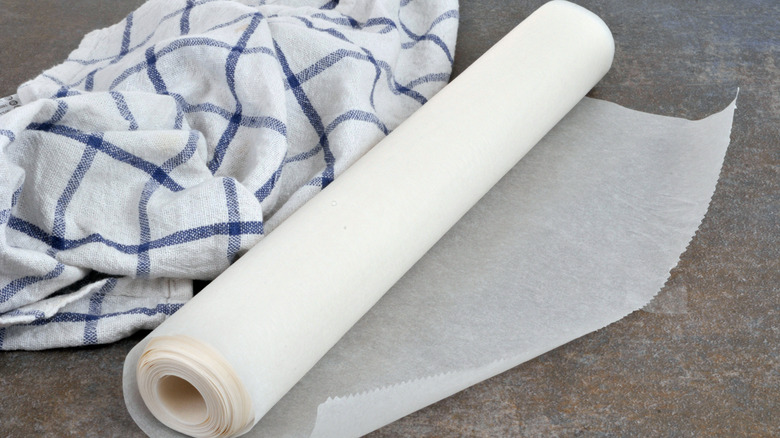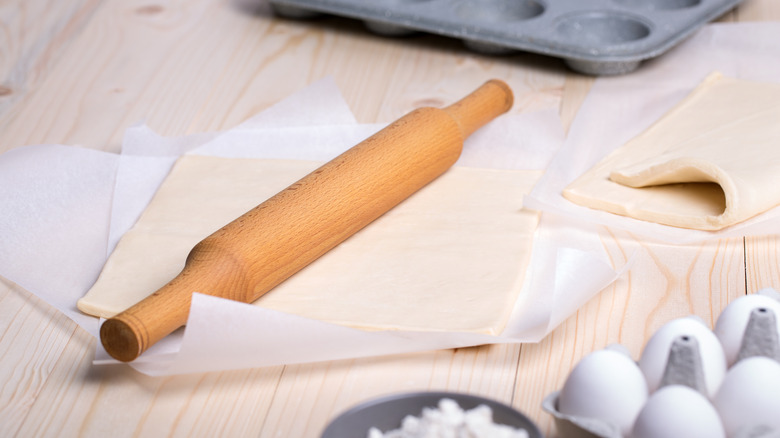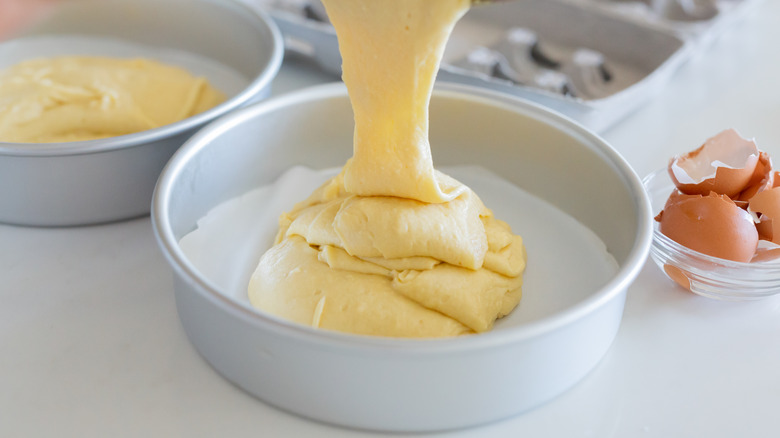Why You Should Keep Wax Paper Away From Hot Ovens
Wax paper has many uses, but there's one place in the kitchen where it doesn't belong, and that's in the oven. Also known as waxed paper or paraffin paper, this handy product is often confused with parchment paper, but there's one crucial difference between the two: Parchment is heat resistant, while wax paper is not.
Parchment can withstand temperatures of 450 degrees Fahrenheit or more, but wax paper's paraffin-coated surface will start to melt when it meets oven temperatures. Once the wax coating has melted, the flammable tissue-like paper underneath can ignite. Aside from the possibility of starting a fire, the melting wax and paper creates smoke, which can damage your oven, your pans, and certainly ruin the taste of your food.
Any situation where the paper would be exposed to the direct heat of the oven should be avoided. Baking cookies or cooking salmon en papillote (fish cooked in a paper packet) are a no-go with wax paper. The paraffin it's made with may be food-safe, but in most cases, it's not oven-safe. For baked or roasted dishes, use parchment paper, aluminum foil, or a silicone liner designed for high heat.
These facts don't mean that wax paper isn't versatile. It still has plenty of value in your kitchen, being less expensive than other paper liners, non-stick, and able to make clean-up a breeze.
For best results, keep away from heat
Wax paper is perfect for all sorts of cold applications, such as lining containers that you use to make no-bake desserts, like protein bars, marshmallows, or Rice Krispies treats. Your dessert won't stick to its container, making for an easy release from the pan and a perfect presentation. This paper is also great for separating foods from each other when freezing them. Lay a sheet of paper between hamburger patties or fish filets as you arrange them in a container, and the layers won't get stuck to each other.
When you're rolling out dough, wax paper can also help you out. Line your countertop with enough wax paper to cover the whole area, then roll the dough out with no worries about it sticking to the counter. To prevent your rolling pin from sticking, place another sheet of paper on top of the dough — you'll be able to roll it as flat as you like without any fuss.
If you cover your work surface with wax paper, it can also catch stray icing, powdered sugar, chopped nuts, or other ingredients that might go flying around when decorating cakes. For a neater way to sift and measure powdery ingredients, pour or sift flour, coffee, or sugar onto wax paper, then fold the sheet up to pour into a bowl. Wax paper is also ideal for wrapping and storing sandwiches, butter, and cheese.
Cake is the exception to the rule
Now that you're informed on why you normally shouldn't use wax paper in the oven, we're going to mention the one instance in which you actually can use it for baking. Wax paper can be used to line the bottom of cake pans, as the cake batter completely covers the paper when you pour it in, which keeps the paper from reaching its smoke point. The cake provides a shield that keeps the wax from melting and the paper from starting to burn. It's important to only use the paper on the bottom of the pan, not up along or over the sides (remember, any exposed parts will start to burn). The product description for Reynolds Cut-Rite wax paper states that along with cakes, wax paper is safe to use on the bottom of breads, muffins, and other baked goods where the paper lining will be fully covered with batter.
Furthermore, the USDA deems wax paper microwave-safe. It can be used to cover food in the microwave if you don't have a lid, with the added benefit of preventing foods from splattering all over the place. Despite its limitations in the oven, wax paper remains a useful multi-purpose kitchen tool.



